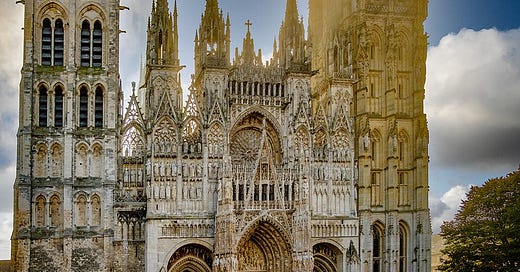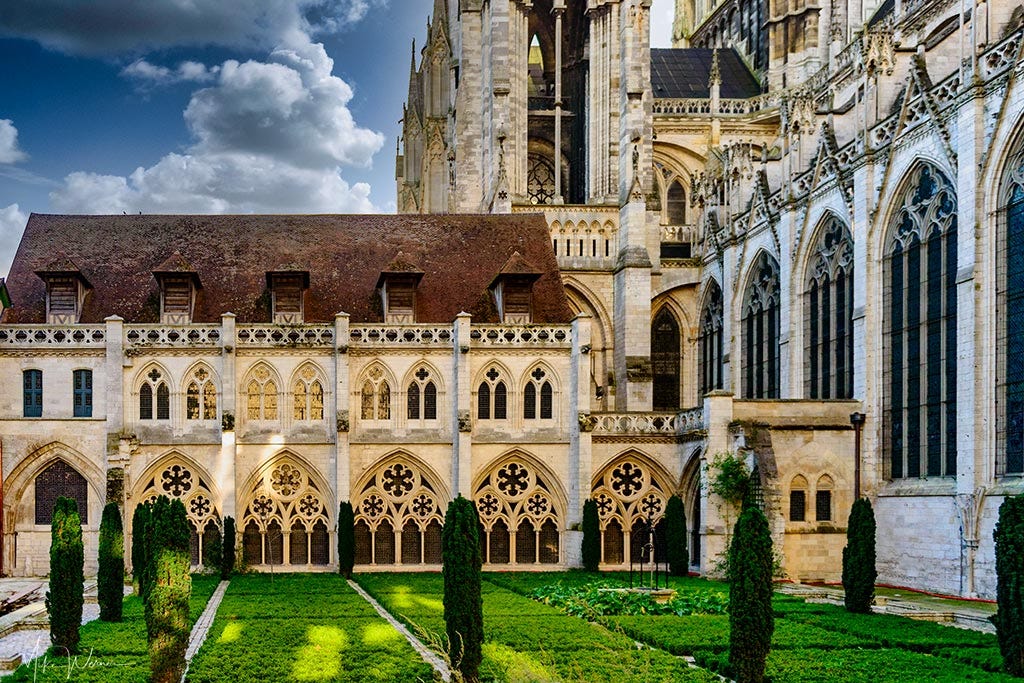Rouen Cathedral, officially known as Cathédrale Notre-Dame de Rouen, stands as a magnificent monument of Gothic architecture in the historical heart of Rouen, Normandy, in northern France. This cathedral is not only a central place of worship but also a site of rich historical and artistic significance.
Click here to see where the cathedral is located on Google Maps
The construction of Rouen Cathedral began in the 12th century and continued into the 16th century, reflecting the evolution of Gothic architectural styles over this period. The earliest sections were built in the High Gothic style, but later additions, particularly the soaring lantern tower and the facade, exhibit the Flamboyant Gothic style, showcasing intricate designs and an abundance of decorative stonework.
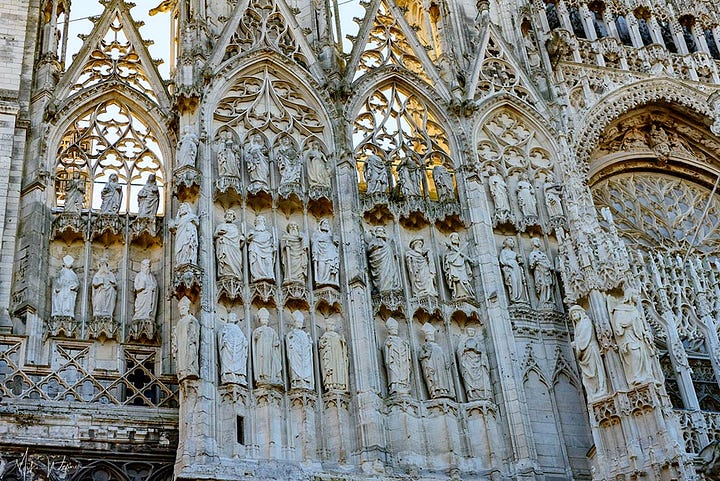
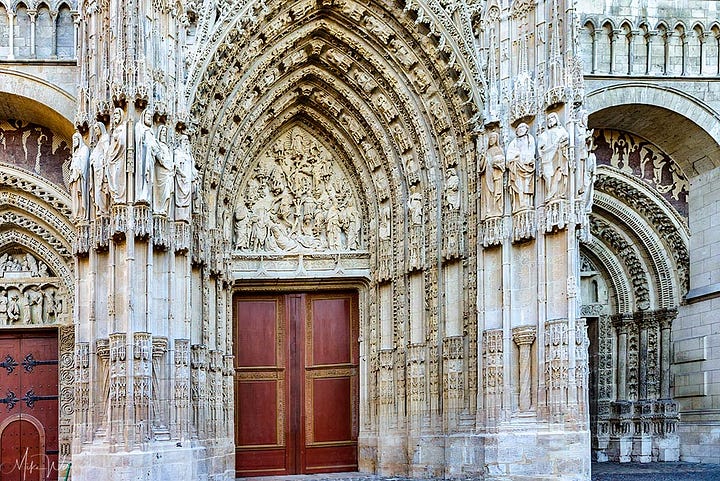
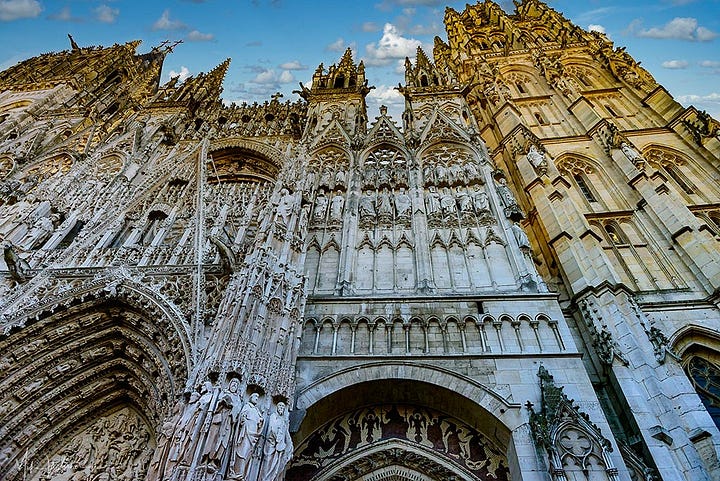
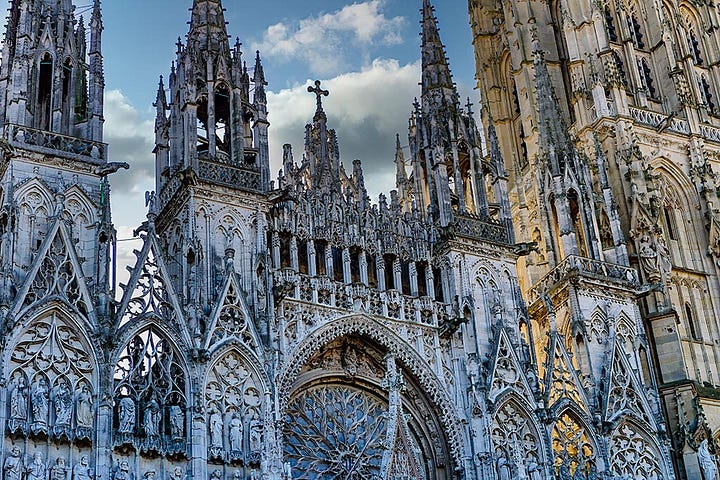
One of the most distinctive features of Rouen Cathedral is its facade, which is adorned with a dazzling array of sculptures, including statues of saints, bishops, and kings. The portal known as the "Portail des Libraires" is especially noteworthy, surrounded by old bookshops that have been part of the cathedral's history for centuries.
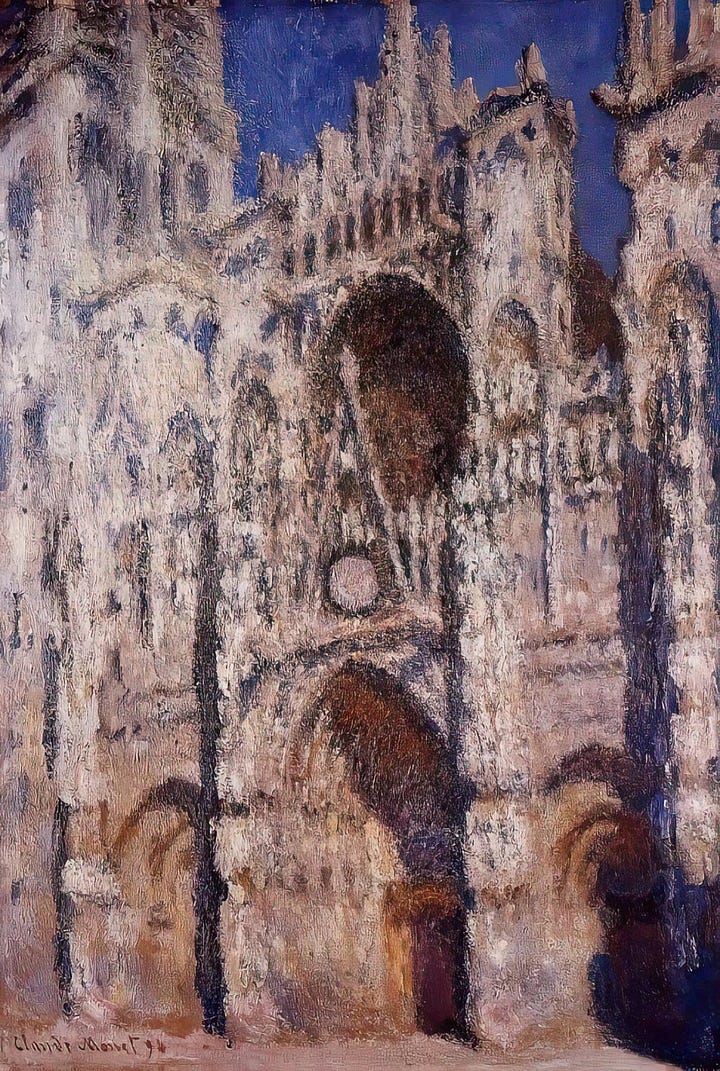
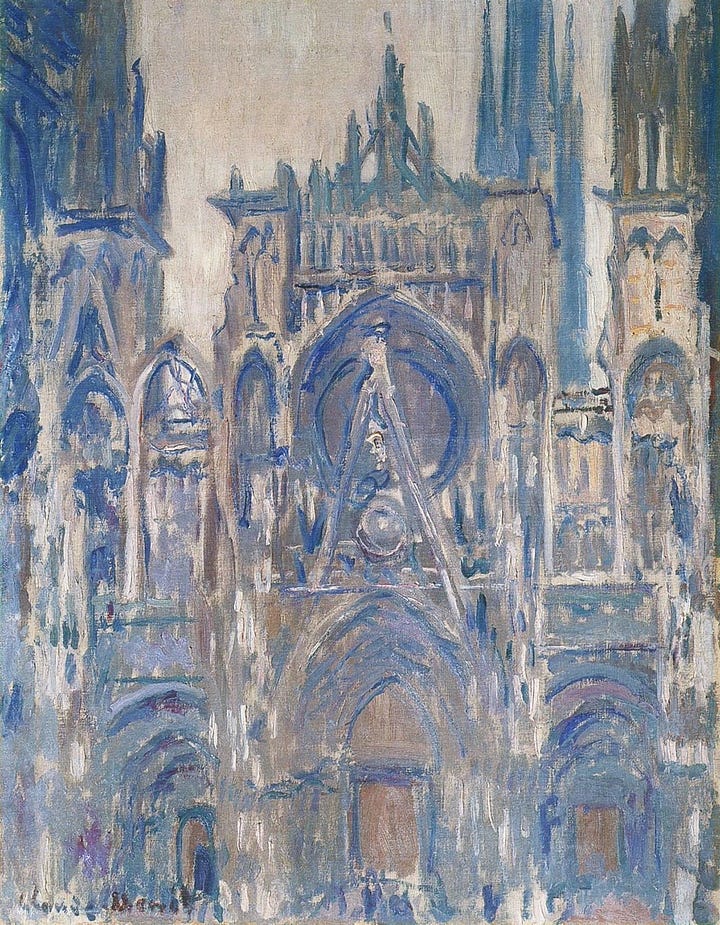
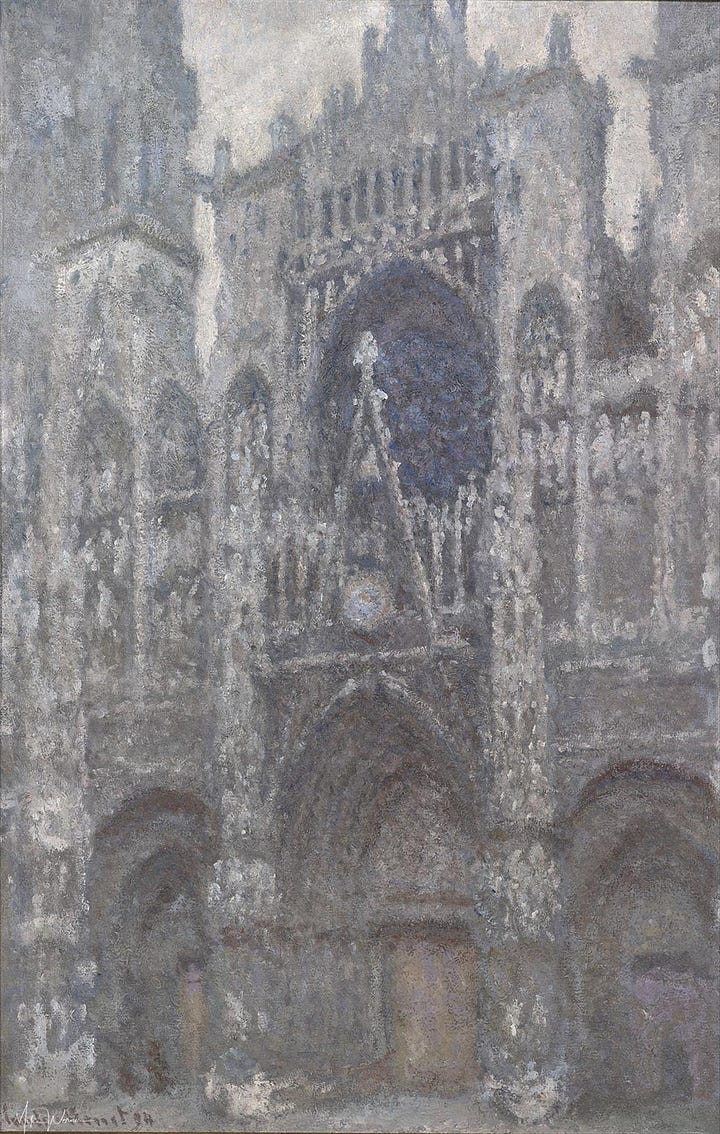
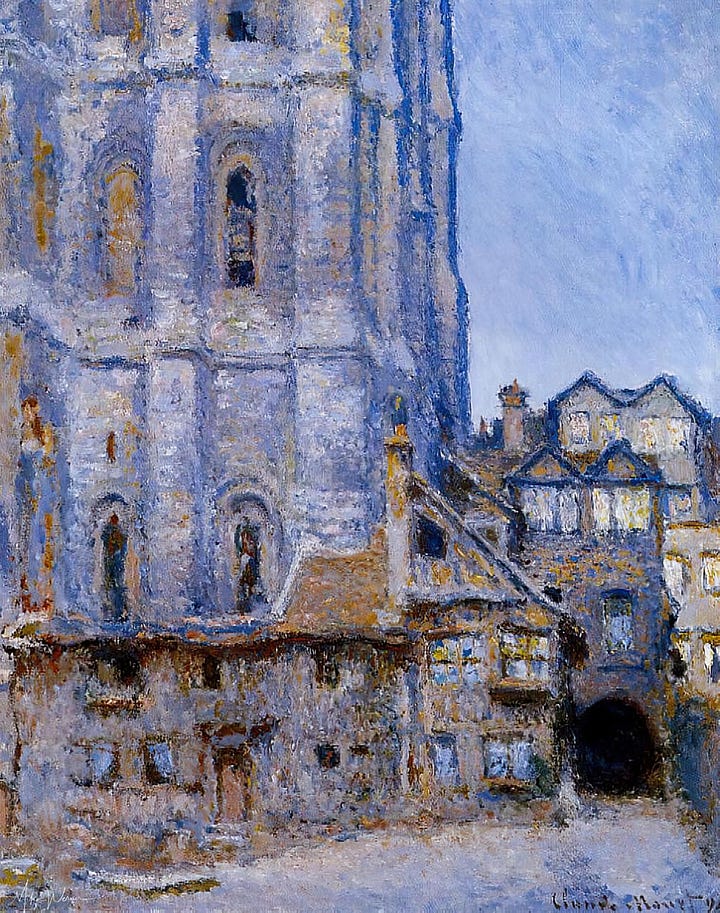
The cathedral has also served as an inspiration in the art world, most famously being the subject of a series of paintings by the Impressionist painter Claude Monet. Monet's series captures the facade of the cathedral at different times of the day and in various weather conditions, exploring the play of light and color that characterizes Impressionist painting. These paintings are celebrated for their vivid portrayal of the transient effects of light on the cathedral's structure.
Rouen Cathedral also has a significant historical role, serving as the burial place for several members of the Norman and Angevin dynasties, including Rollo, one of the Viking founders of Normandy, and Richard the Lionheart, who had his heart buried there. The cathedral's tomb sculptures and other funerary art are remarkable examples of medieval craftsmanship.


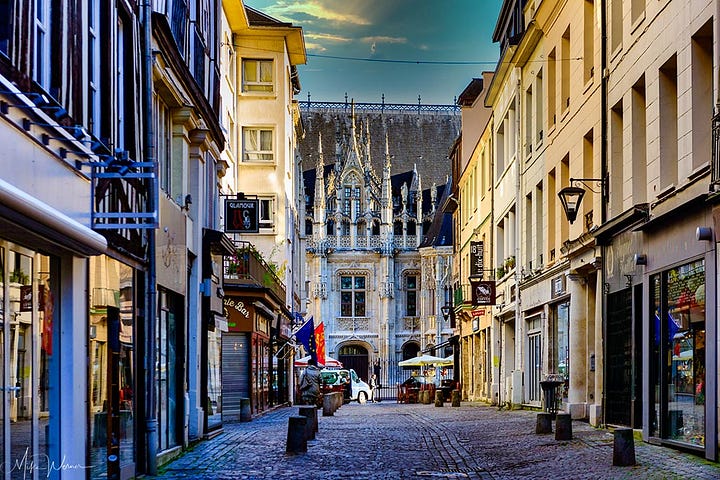
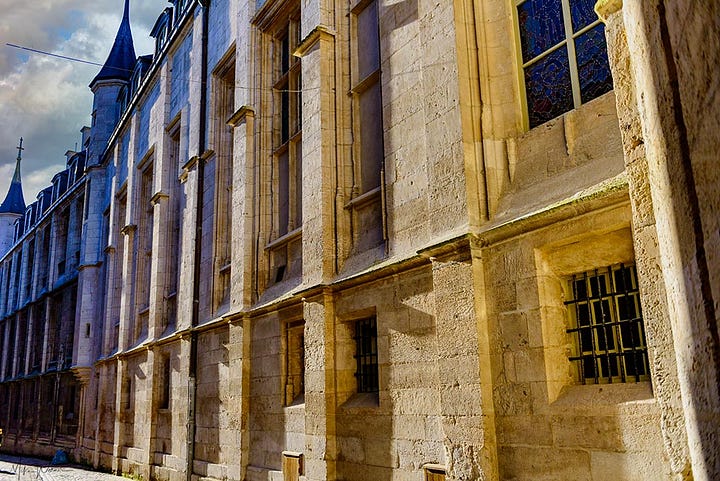
The cathedral has endured various challenges over the centuries, including damage during World War II when parts of the structure were destroyed by Allied bombings. Subsequent restoration efforts have carefully preserved its architectural integrity and historical details, allowing it to remain a vibrant center of spiritual life and a major tourist attraction in Rouen. Its history, art, and architecture make Rouen Cathedral a profound emblem of French cultural and religious heritage.

